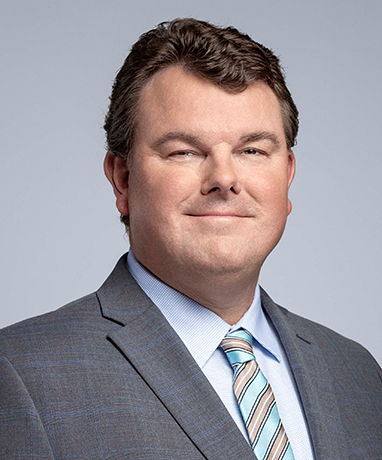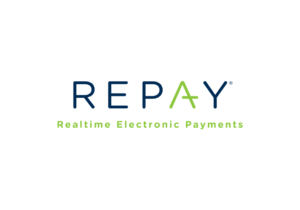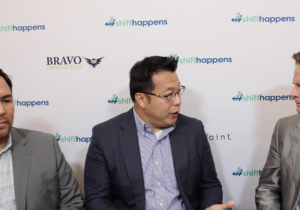
Sempra Vice President of Investor Relations Glen Donovan
By Exec Edge Editorial
Sempra (NYSE:SRE), a leading North America energy infrastructure company, recently announced strong second quarter results and a two-for-one stock split – giving greater accessibility to invest in the company amid a mounting need for more modernized energy infrastructure to meet the growing demand for cleaner energy.
We spoke to Glen Donovan, vice president of investor relations at Sempra, about the latest earnings report, the two-for-one stock split and the energy demands in its key utility service territories of California and Texas.
Q: Just a few weeks ago, Sempra reported increased earnings compared to the same quarter last year. Why did Sempra’s Board of Directors choose to declare a two-for-one stock split?
Thank you for speaking with me today. Sempra is celebrating 25 years in business, but our history actually goes back to the 1800s. Our companies have evolved a lot over the years to cater to the increasing need to power new communities and markets, and right now those trends include electrification, the adoption of more electric vehicles, and the increased government support for infrastructure investments. Through all of this change, our vision has remained the same: To deliver energy with purpose. I think I can speak for our employees across North America when I say that we are united by our commitment to serving others, including our investors.
The Board’s decision to declare a two-for-one stock split means our company is now more accessible to more people. Since our formation in 1998, this is Sempra’s first stock split and our shares have increased from $25 to its current price of over $140 per share which has created considerable value for shareholders. We have experienced substantial momentum in our business and believe there are exciting opportunities for additional share price appreciation. The split makes sense by improving overall trading volume and liquidity and increasing accessibility. We’re proud of our achievements and welcome new investors to join our mission to be North America’s premier energy infrastructure company.
Q: This is an opportune time for Sempra given the positive outlook for grid investments in one of your key markets, California. California Independent System Operator’s (CAISO) recently released 2022-2023 transmission plan calling for new infrastructure investments. Tell us about the CAISO plan and Sempra’s opportunity to meet the state’s demands.
In many respects, the investments needed to modernize our grid is an opportunity for significant rate base growth at Sempra. Earlier this year, California’s Independent System Operator awarded Sempra’s San Diego Gas & Electric an estimated $500 million of planned transmission projects. Another $2.3 billion worth of projects within our service territory is up for competitive bidding.
As you know, SDG&E has a track record of success with more than 1,800 miles of transmission lines that are proactively monitored and modernized for improved safety and reliability. In addition, SDG&E’s narrower focus on energy delivery and connecting producers of cleaner energy to customers directly supports the transition to a lower carbon energy system. Our talented and experienced team at Sempra California stands ready to support the state’s ambitious 2045 net-zero goals.
Q: Sempra has a diverse geographic footprint, it not only serves California, but also Texas – which is expected to grow by nearly five million people by 2030. Tell us about the economic opportunity available to Sempra in Texas.
When we acquired 80% of Oncor, the largest energy delivery company in Texas, five years ago, it had $11 billion of rate base, and Sempra made a regulatory commitment to support a minimum $7.4 billion 5-year capital plan. That same commitment grew to be nearly $12 billion of capital investment over that same period, and Oncor nearly doubled its rate base to $21 billion as of the end of 2022. Over the past five years Texas has shown very favorable demographic trends and Oncor’s system has grown substantially to meet the growing demands for electricity, having added approximately 7,000 miles of transmission and distribution lines.
We have long talked about the incredible macroeconomic growth in Texas and how it continues to drive additional capital investments, but here’s the reality: the demand is anticipated only to increase, and policymakers realize that. The state legislative session this year ended with the enactment of several energy measures to strengthen grid resiliency and facilitate investment in new energy infrastructure to meet the growing Texas population. This year, Oncor increased its 2023 to 2027 capital plan to approximately $19 billion. With continued strong economic growth and the recent positive legislation, we now anticipate additional upside when we roll forward the new 5-year capital plan.
These legislative outcomes are expected to enhance Oncor’s ability to better serve current customers and welcome new customers.
Q: Electrification is the focus worldwide as leaders rapidly work to reach net-zero. Tell us about the work Sempra is doing across its family of companies to support electrification.
Sempra has long worked to stay ahead of the curve by investing in modern energy networks, connecting more renewables to the grid and pioneering smart grid technologies to advance reliability and safety. Our companies have been working aggressively to expand cleaner transportation infrastructure, including electric vehicle (EV) charging stations, across the communities we serve. For example, SDG&E has built 3,600 chargers. The utility is also piloting vehicle-to-grid technology (V2G) to connect electric school buses to 60kW bi-directional DC fast chargers. The goal is to help improve grid reliability and resiliency and reduce customers’ energy costs while also increasing adoption of zero-emissions transportation.
Over at Oncor, the company collaborated with the National Renewable Energy Laboratory (NREL) to examine the opportunity for near-term electrification of heavy-duty trucks, or semi-trucks with a gross vehicle weight greater than 26,000 pounds. The team found that most (~80%) of the substations studied could supply the time-varying loads of 100 trucks charged at 100 kW/vehicle without any upgrades, and an additional 10% of substations could avoid upgrades if fleets used “smart” charging. As technologies that enable heavy-duty fleet electrification become available, studies like this can help anticipate and support the transition to cleaner transportation.
We have been on a sustained path to decarbonize our business operations and the markets we serve for two decades now. We’re excited about the opportunities that lie ahead of us to modernize and expand our energy networks so we can deliver increasingly cleaner, affordable and reliable energy to customers. We are proud of our progress and our ability to consistently deliver results to our investors.
This press release contains statements that constitute forward-looking statements within the meaning of the Private Securities Litigation Reform Act of 1995. Forward-looking statements are based on assumptions with respect to the future, involve risks and uncertainties, and are not guarantees. Future results may differ materially from those expressed or implied in any forward-looking statement. These forward-looking statements represent our estimates and assumptions only as of the date of this press release. We assume no obligation to update or revise any forward-looking statement as a result of new information, future events or otherwise.
In this press release, forward-looking statements can be identified by words such as “believes,” “expects,” “intends,” “anticipates,” “contemplates,” “plans,” “estimates,” “projects,” “forecasts,” “should,” “could,” “would,” “will,” “confident,” “may,” “can,” “potential,” “possible,” “proposed,” “in process,” “construct,” “develop,” “opportunity,” “initiative,” “target,” “outlook,” “optimistic,” “poised,” “maintain,” “continue,” “progress,” “advance,” “goal,” “aim,” “commit,” or similar expressions, or when we discuss our guidance, priorities, strategy, goals, vision, mission, opportunities, projections, intentions or expectations.
Factors, among others, that could cause actual results and events to differ materially from those expressed or implied in any forward-looking statement include risks and uncertainties relating to: California wildfires, including potential liability for damages regardless of fault and any inability to recover all or a substantial portion of costs from insurance, the wildfire fund established by California Assembly Bill 1054, rates from customers or a combination thereof; decisions, investigations, inquiries, regulations, denials or revocations of permits, consents, approvals or other authorizations, renewals of franchises, and other actions by (i) the California Public Utilities Commission (CPUC), Comisión Reguladora de Energía, U.S. Department of Energy, U.S. Federal Energy Regulatory Commission, Public Utility Commission of Texas, and other governmental and regulatory bodies and (ii) the U.S., Mexico and states, counties, cities and other jurisdictions therein and in other countries where we do business; the success of business development efforts, construction projects and acquisitions and divestitures, including risks in (i) being able to make a final investment decision, (ii) completing construction projects or other transactions on schedule and budget, (iii) realizing anticipated benefits from any of these efforts if completed, and (iv) obtaining the consent or approval of third parties; litigation, arbitrations, property disputes and other proceedings, and changes to laws and regulations, including those related to the energy industry in Mexico; cybersecurity threats, including by state and state-sponsored actors, of ransomware or other attacks on our systems or the systems of third parties with which we conduct business, including the energy grid or other energy infrastructure, all of which have become more pronounced due to recent geopolitical events; our ability to borrow money on favorable terms and meet our obligations, including due to (i) actions by credit rating agencies to downgrade our credit ratings or place those ratings on negative outlook or (ii) rising interest rates and inflation; failure of foreign governments, state-owned entities and our counterparties to honor their contracts and commitments; the impact on affordability of San Diego Gas & Electric Company’s (SDG&E) and Southern California Gas Company’s (SoCalGas) customer rates and their cost of capital and on SDG&E’s, SoCalGas’ and Sempra Infrastructure’s ability to pass through higher costs to customers due to (i) volatility in inflation, interest rates and commodity prices, (ii) with respect to SDG&E’s and SoCalGas’ businesses, the cost of the clean energy transition in California, and (iii) with respect to Sempra Infrastructure’s business, volatility in foreign currency exchange rates; the impact of climate and sustainability policies, laws, rules, regulations, disclosures and trends, including actions to reduce or eliminate reliance on natural gas, increased uncertainty in the political or regulatory environment for California natural gas distribution companies, the risk of nonrecovery for stranded assets, and our ability to incorporate new technologies; weather, natural disasters, pandemics, accidents, equipment failures, explosions, terrorism, information system outages or other events that disrupt our operations, damage our facilities or systems, cause the release of harmful materials or fires or subject us to liability for damages, fines and penalties, some of which may not be recoverable through regulatory mechanisms or insurance or may impact our ability to obtain satisfactory levels of affordable insurance; the availability of electric power, natural gas and natural gas storage capacity, including disruptions caused by failures in the transmission grid, pipeline system or limitations on the withdrawal of natural gas from storage facilities; Oncor Electric Delivery Company LLC’s (Oncor) ability to reduce or eliminate its quarterly dividends due to regulatory and governance requirements and commitments, including by actions of Oncor’s independent directors or a minority member director; changes in tax and trade policies, laws and regulations, including tariffs, revisions to international trade agreements and sanctions, any of which may increase our costs, reduce our competitiveness, impact our ability to do business with certain counterparties, or impair our ability to resolve trade disputes; and other uncertainties, some of which are difficult to predict and beyond our control.
These risks and uncertainties are further discussed in the reports that Sempra has filed with the U.S. Securities and Exchange Commission (SEC). These reports are available through the EDGAR system free-of-charge on the SEC’s website, www.sec.gov, and on Sempra’s website, www.sempra.com. Investors should not rely unduly on any forward-looking statements.
Sempra Infrastructure, Sempra Infrastructure Partners, Sempra Texas, Sempra Texas Utilities, Oncor and Infraestructura Energética Nova, S.A.P.I. de C.V. (IEnova) are not the same companies as the California utilities, SDG&E or SoCalGas, and Sempra Infrastructure, Sempra Infrastructure Partners, Sempra Texas, Sempra Texas Utilities, Oncor and IEnova are not regulated by the CPUC.
Contact:
Exec Edge
executives-edge.com
Editor@executives-edge.com






